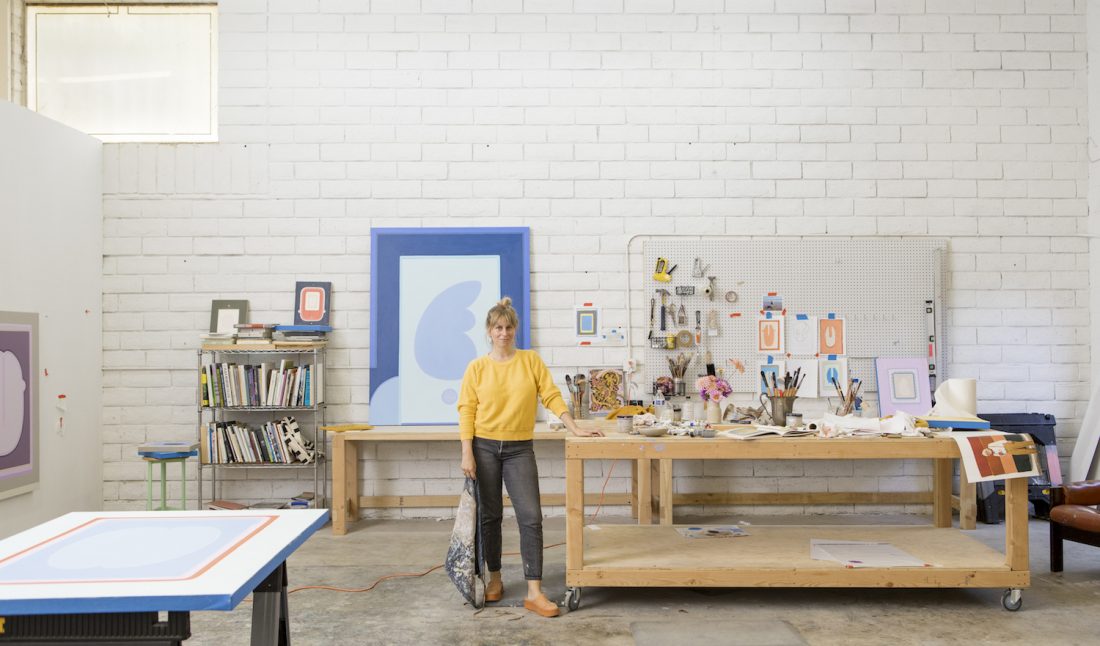Horticulture, agriculture, and environmental studies have had a lasting impact on the artist Lily Stockman. Raised on a farm in Rhode Island, she spent her summers mowing hay, absorbed in the beauty of nature. With degrees from both Harvard and NYU, her experiences traveling to places like Mongolia and India left a lasting impression.
Today, Stockman is based in Los Angeles where she bikes her children to school and paints in her Frogtown studio. At home the past few months, she’s cozied up to poetry, fueling inspiration for paintings that could take on new structure and tone. Returning to her studio, she completed 22 new oil paintings, all in a layered, freehand approach. Those are on view now through October 18 at Charles Moffett in New York in “Seed, Stone, Mirror, Match.”
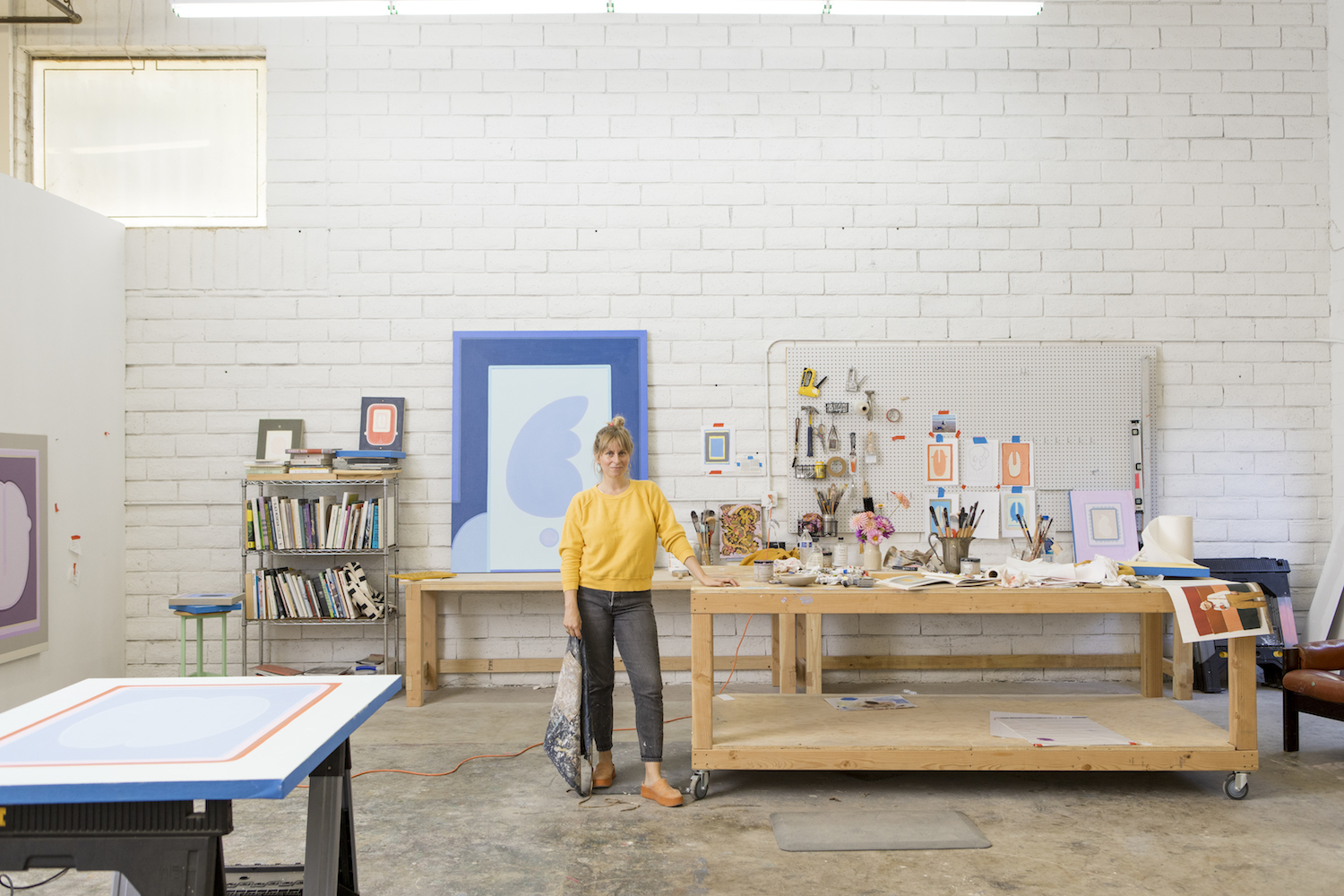 Lily Stockman in her Los Angeles studio, photo by Laure Joliet.
Lily Stockman in her Los Angeles studio, photo by Laure Joliet.
Whitewall spoke with Stockman about her new show.
WHITEWALL: What was the starting point for this new group of paintings?
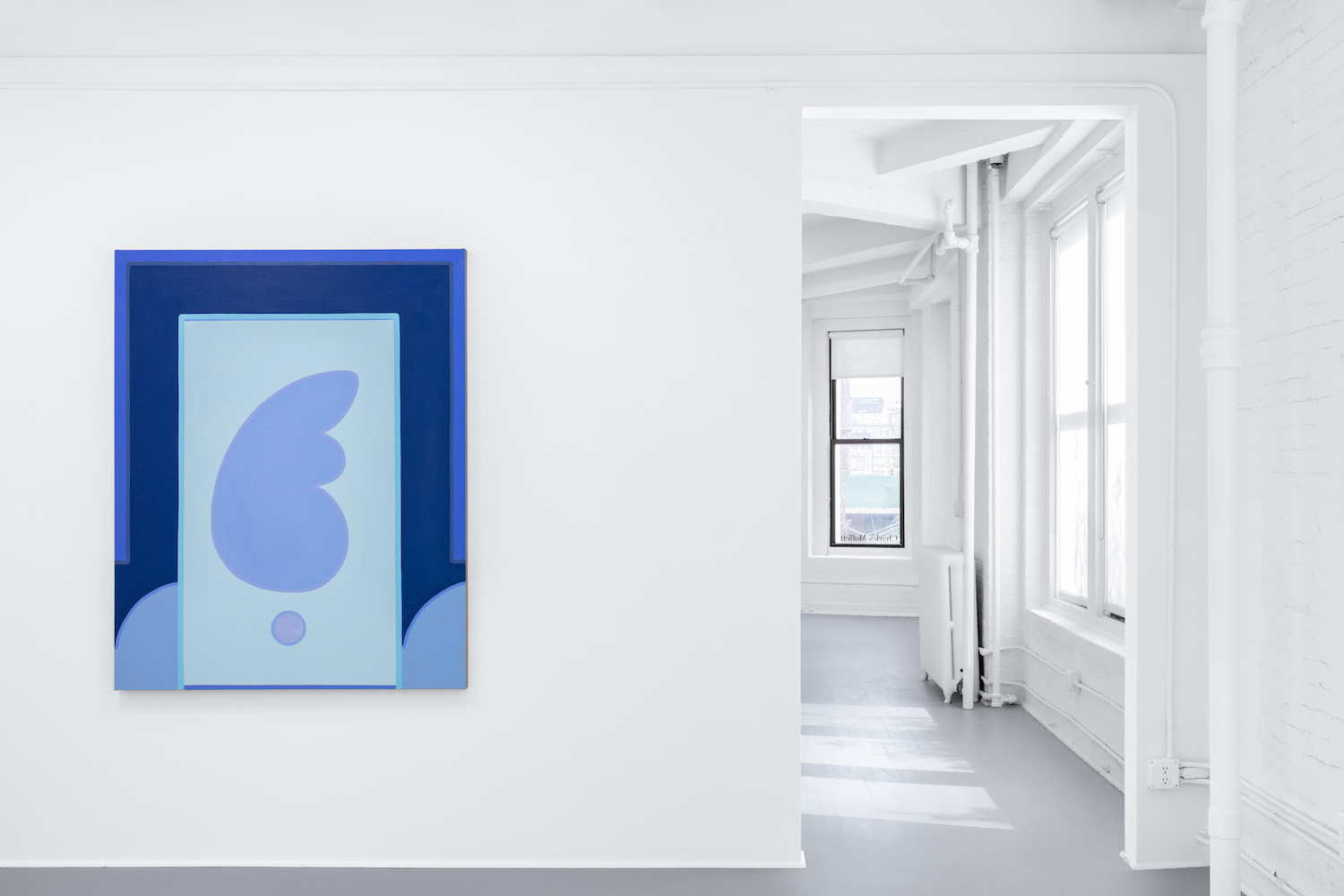 Installation photo of “Lily Stockman: Seed, Stone, Mirror, Match” by Daniel Greer, courtesy of the artist and Charles Moffett.
Installation photo of “Lily Stockman: Seed, Stone, Mirror, Match” by Daniel Greer, courtesy of the artist and Charles Moffett.
LILY STOCKMAN: Los Angeles came to a stand-still just as I was finally getting into the rhythm for this show. I had a six-month-old and two-year-old. So suddenly without daycare or childcare I couldn’t be at my studio all day, and I used what I had at home—colored pencils and paper—to draw every night after the babies were down. And I read, in fits and starts, some really great poetry I hadn’t looked at in a decade.
Poetry can be a wonderful refuge, and I found it in Robert Haas, Louise Glück, Mary Oliver, John Ashbery, Susan Howe, Ross Gay (his Book of Delights came out just as the pandemic got wings and I can’t recommend it enough). Because I couldn’t paint, I read their poems, and the poems gave me ideas about structure and tone, and when I finally got back to the studio I was brimming with ideas and got right to work.
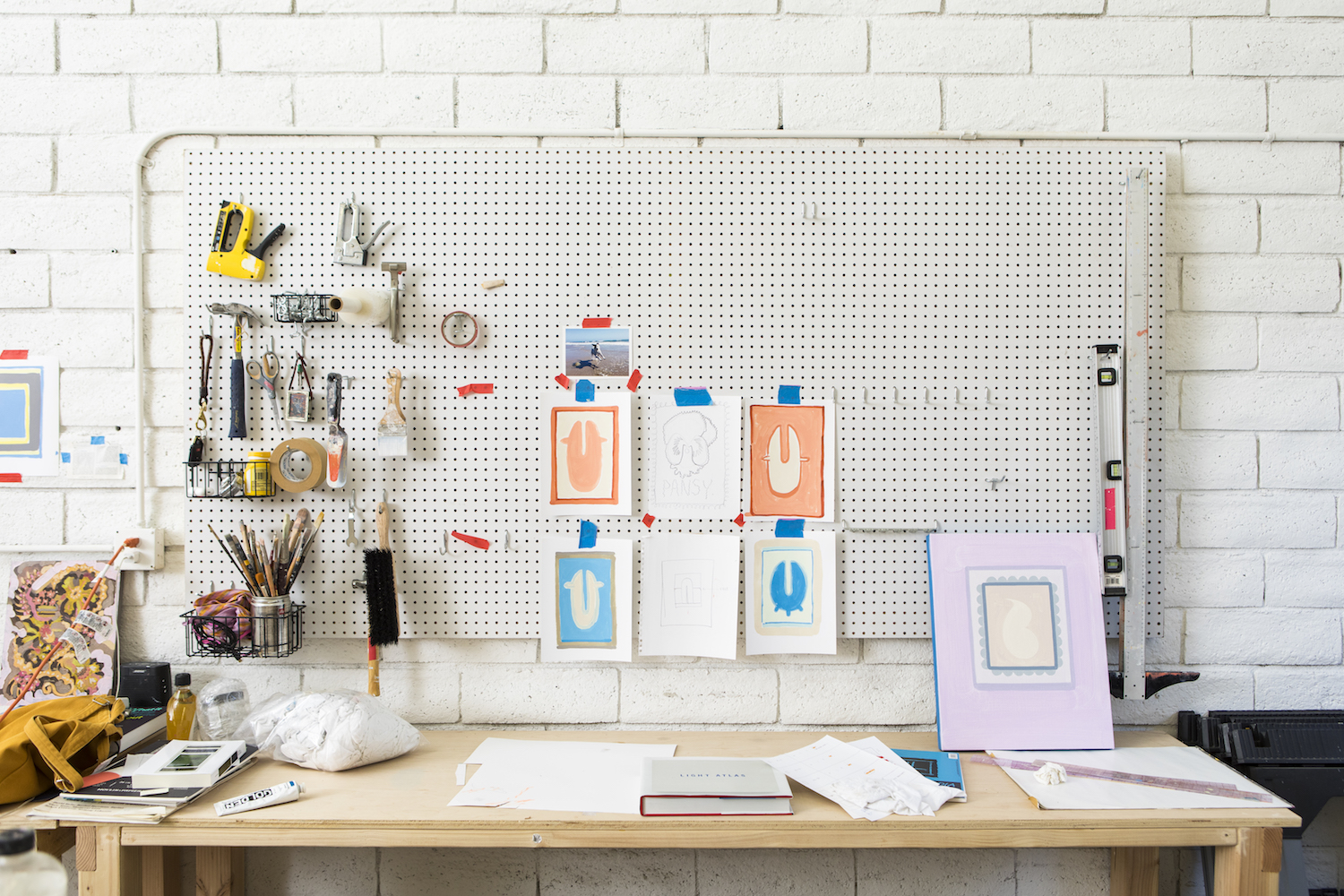 Lily Stockman’s Los Angeles studio, photo by Laure Joliet.
Lily Stockman’s Los Angeles studio, photo by Laure Joliet.
I’m thinking of this group of paintings like a Mary Ruefle poem stripped down to the nouns and verbs, put in a lapidary tumbler, and what’s left is a very burnished, smaller thing, with the hard edges rounded out.
My shapes evolved too—the arches and lozenges morphed into a more solid seed head or cupped-hands shape. The harmonizing pastels I usually work with evolved into a darker, deeper palette of navy blues, moth browns, and earthy terra-cottas. I think the pandemic as backdrop for the police violence and BLM protests set a new tone for the work; set the context. They are still ultimately paintings that insist on joy, delight, love. I hope that comes through.
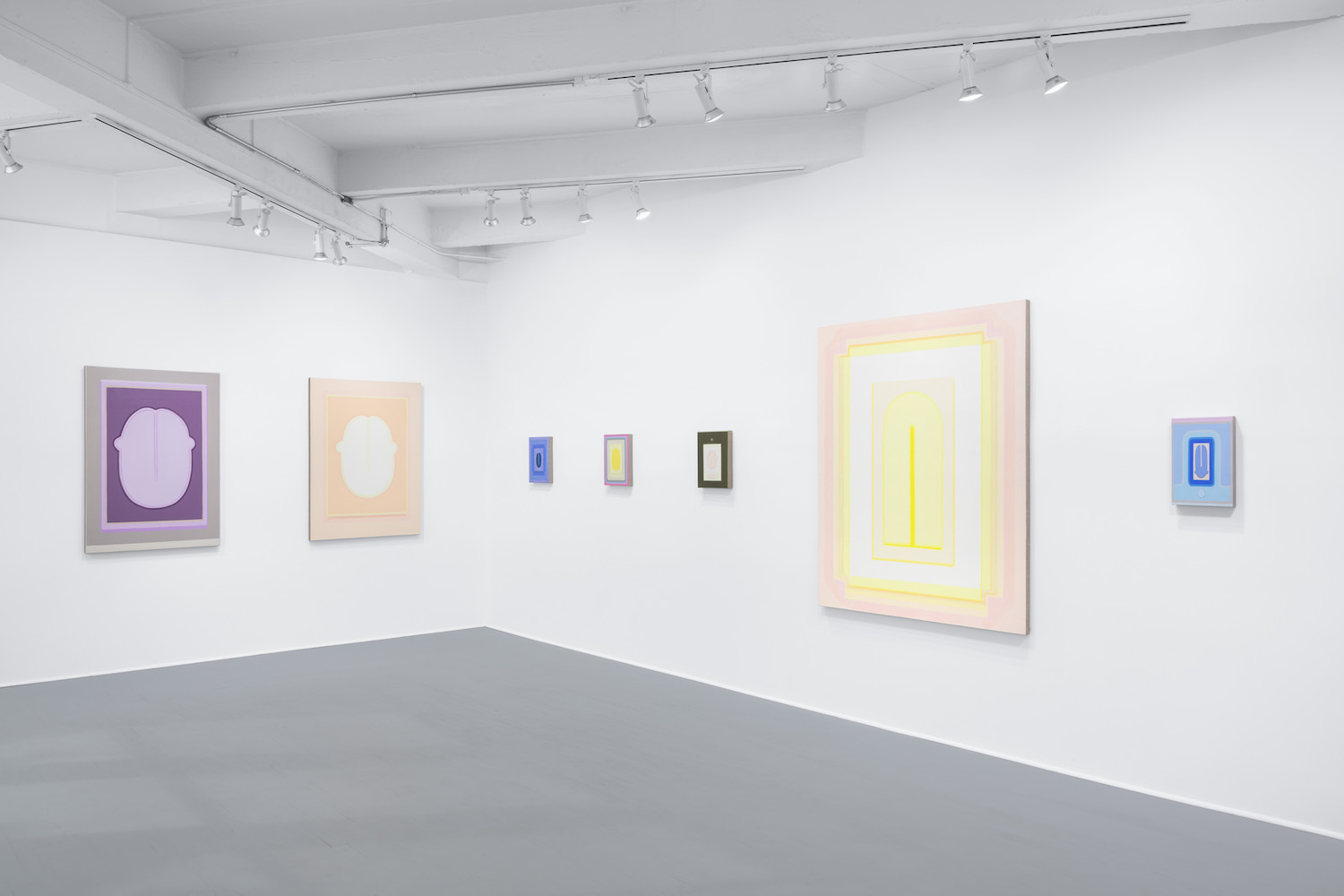 Installation photo of “Lily Stockman: Seed, Stone, Mirror, Match” by Daniel Greer, courtesy of the artist and Charles Moffett.
Installation photo of “Lily Stockman: Seed, Stone, Mirror, Match” by Daniel Greer, courtesy of the artist and Charles Moffett.
WW: How would you describe your layered approach to these paintings?
LS: I paint flat on sawhorses or a big work table in thin layers, diluting my oil paint down with medium to the consistency of watercolor sometimes, so the paint has to dry flat so it stays put and doesn’t drip. I might use a T-square to locate the central point of the bigger ones, but the small ones I just eyeball, and start working very freely in the underpainting, and slowly bring the outlines and shapes into a cleaner line in each successive layer. Once you see them in person you realize the lines and shapes are a little wobbly and off; it’s important you can see my hand in the work. No tape.
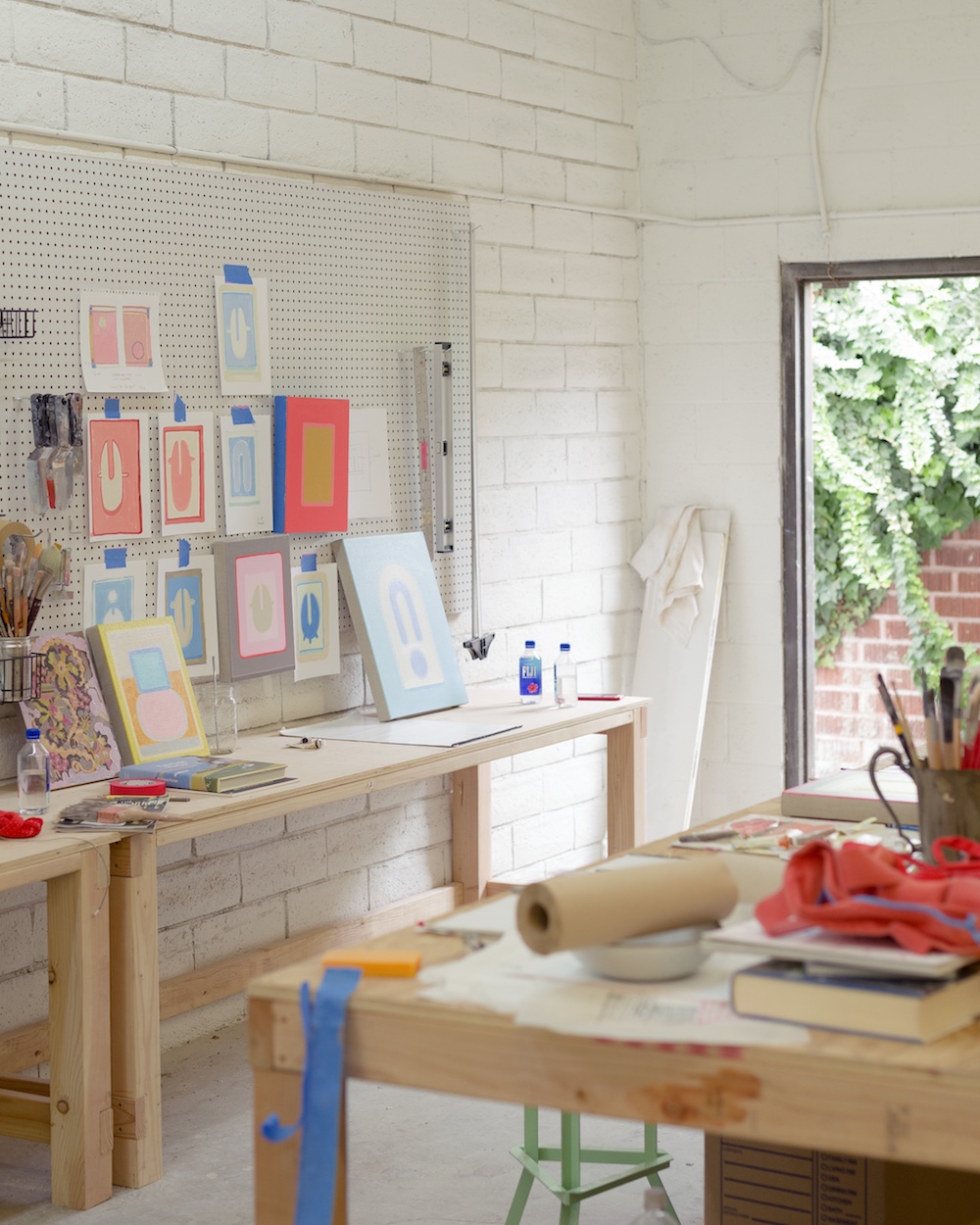 Lily Stockman’s Los Angeles studio, photo by Ed Mumford.
Lily Stockman’s Los Angeles studio, photo by Ed Mumford.
I don’t know what I’m going to do when I start painting but usually get an idea as it starts to take shape. For instance, Float was inspired by this wonderful detail in the Linaioli Tabernacle painted by Fra Angelico around 1433. I was flipping through an old book on Renaissance painting I have and caught a detail photograph I hadn’t noticed before: the tiny gilt doors of the tabernacle open up like a dollhouse to reveal Mary and the baby Jesus, but what caught my delight was the saints painted on the inside of the doors—they aren’t painted for us, the viewer, but to keep Mary and Jesus company inside the world of the painting when it’s closed shut. I had never thought of the interior world of a painting once we leave, like if a tree falls in the forest and no one’s around to hear it kind of thing.
So, Float got doors. I started painting these little doors and shutters into the paintings after that, to keep the painting company with itself.
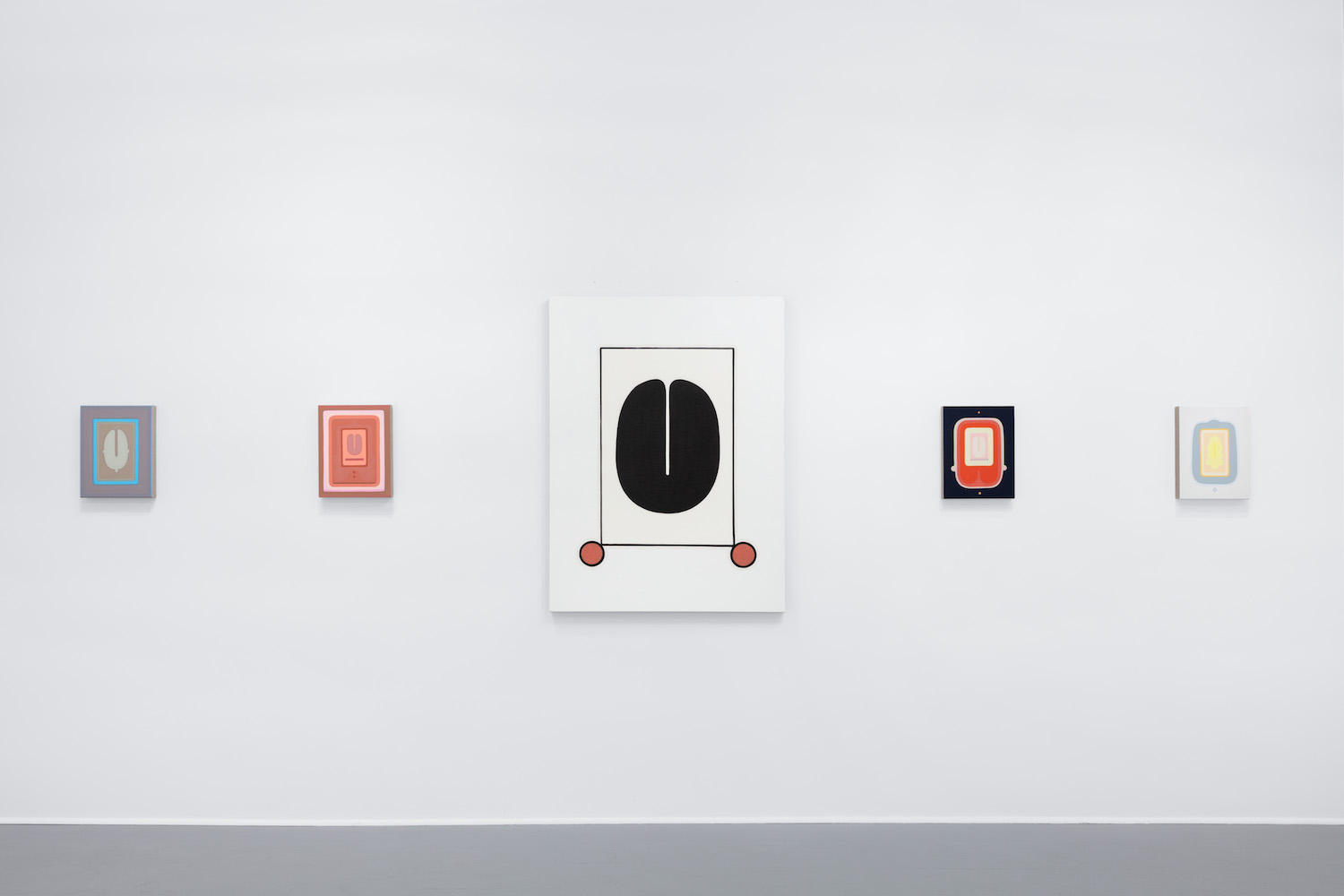 Installation photo of “Lily Stockman: Seed, Stone, Mirror, Match” by Daniel Greer, courtesy of the artist and Charles Moffett.
Installation photo of “Lily Stockman: Seed, Stone, Mirror, Match” by Daniel Greer, courtesy of the artist and Charles Moffett.
WW: How have your travels impacted the way you see art?
LS: This also comes with getting older, but I’m less interested in categorizing what’s “art” and what’s craft, decoration, design, a tradition. Some of the most beautiful, moving works of art I’ve seen recently are the Gullah sweetgrass baskets from South Carolina.
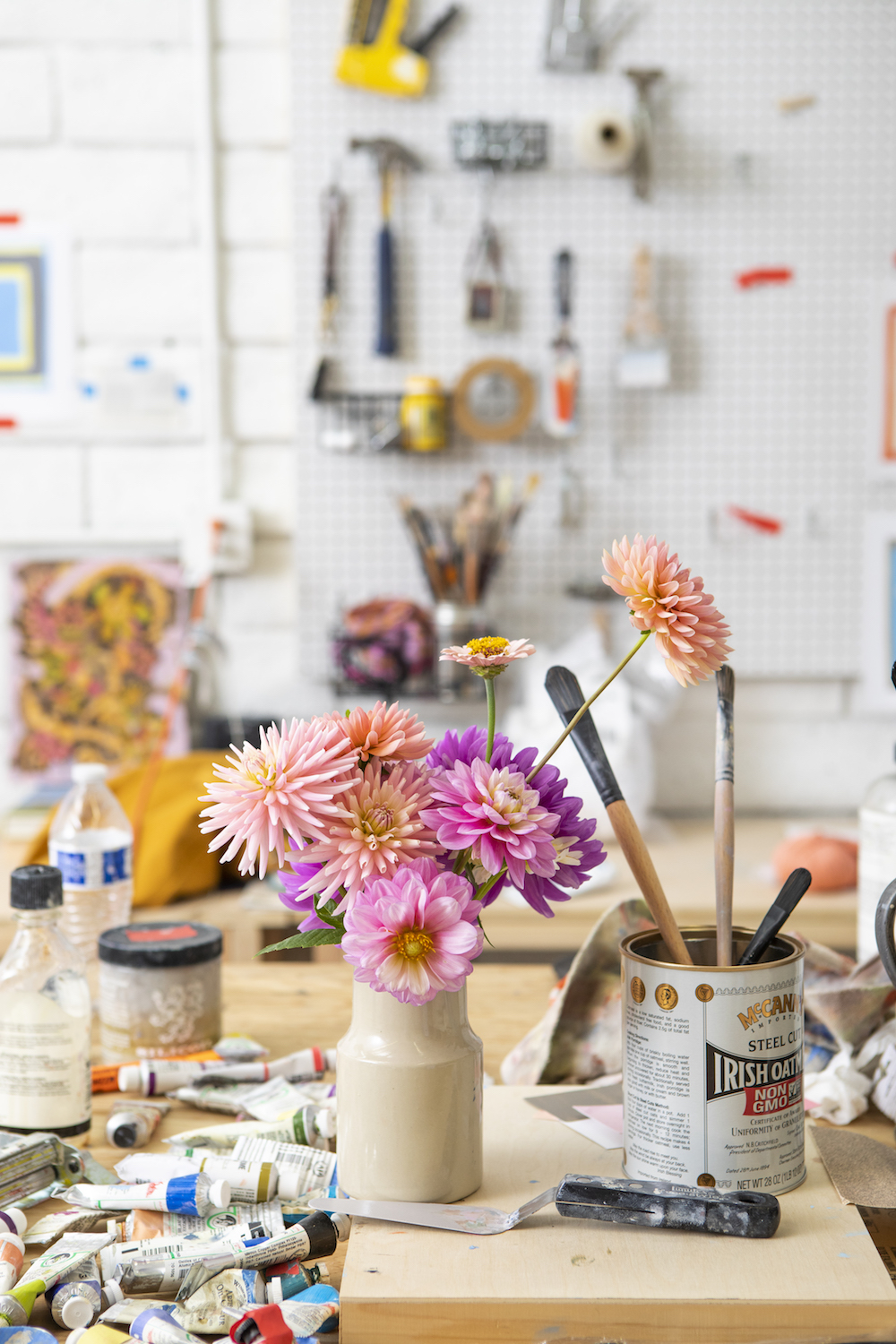 Lily Stockman’s Los Angeles studio, photo by Laure Joliet.
Lily Stockman’s Los Angeles studio, photo by Laure Joliet.
WW: What’s the environment in your studio like?
LS: I bike my toddler to daycare, drop her off at eight, then bike along the L.A. River path to my studio in Frogtown, a few miles away. I love the world of the L.A. River; I don’t have to contend with cars, it’s just people moving slowly by their own energetic output, which is an interesting way to take the temperature of “how everybody’s doing” so to speak. People are out running with masks on, cyclists cruising by, people down in the river bottom fishing, people in the encampments doing laundry, cooking over fires. It’s a very diverse swath of Angelenos sharing this secret stretch of river with the herons and egrets, all hidden below the freeways.
I like to warm up by tidying up, putting on music, gabbing with my studio neighbor Hilary Pecis, then mixing up paint and getting to work. It takes a few weeks or even months to make a painting, so I try to keep the momentum going before the oil paint dries out on my palette. I take a little break to read or catch up on news or call my sisters around lunchtime, then work until 5, and bike home as fast as I can to help my husband with dinner for the kids. If I’m on a deadline I drive back to the studio after their bedtime and work until midnight or two a.m. I wish I could break this cycle but I’m afraid I’m a life-long deadline adrenaline glutton, so I love working 18-hour days right up until the photographer shoots the work, and even then, I make small adjustments.
WW: How are you continuing to be inspired by sources like horticulture, agriculture, and environmental studies in a time like today?
LS: Seed catalogs are some of the best art magazines out there. I grew up on a farm on the east coast and spent my summers mowing hay. I think the rounded bands outlining my paintings come from mowing the perimeter of a hayfield—you can never mow a 90-degree angle, you mow a spandrel. I have a postage-stamp-sized garden behind our house in L.A. and get all my palette and color ideas from spending time back there. A silver-white dianthus on a grey-blue stem against a tangle of dead tomato vines is already a painting idea before I leave the garden.
WW: How does being based in Los Angeles and Joshua Tree impact your work and overall creative energy?
LS: L.A. is a great place to be a painter; I don’t think I’d be making this kind of work if I were living anywhere else. I like a crumbling Art Deco facade, a neon sign outside a liquor store in twilight, pink lilies on maroon stems growing wild in the canyons– visually it’s a fantasy for a painter. And the Mojave Desert is a very different sort of hard-won beauty that requires you to look very closely at, say, a thimble-sized wooly daisy growing in the sand, or take in an endless horizon line all the way to Twentynine Palms. I like the extremes in scale of the desert.
WW: How does being a mother impact your work as an artist?
LS: The art writer Jori Finkle calls motherhood “the last taboo” in the art world. (Her documentary Artist and Mother is phenomenal.) The perception is that motherhood somehow diminishes the seriousness of or commitment to the work, the career. There is a double-standard; rarely are my male peers asked about how fatherhood has impacted their work or career.
A friend once overheard a famous New York gallerist on the phone talking a client out of buying work from a female artist and instead buying work from a male artist, saying the former was “a bad investment” because she was pregnant. A museum director told me the story of her husband driving their screaming infant around the block until she could duck out of her big opening to nurse in the passenger seat before running back into the museum.
So, if anything, motherhood has made my ambition crystal-clear. Zadie Smith writes about this all very beautifully. And Anne Truitt wrote so movingly about it in her seminal Daybook. Jack Pierson put me in a big show after I’d just had my first baby and it felt like a gift from the gods. I’ll always be grateful to him for giving me that opportunity at such an isolating, vulnerable, challenging time.
WW: What are you working on next?
LS: I’m working on a new, very large scale—a hundred inches across—series of horizontally-oriented paintings. I’ve been working in a vertical orientation for years, and I’m excited to work on a scale and layout that commits to landscape. The thrilling thing about working so big is you can really paint “at-speed,” really charge the brush and move athletically around the surface. I think of Mary Corse, Rebecca Morris, and Mary Weatherford. There’s a great tradition of women making big paintings in L.A. I’m excited to get to it.






